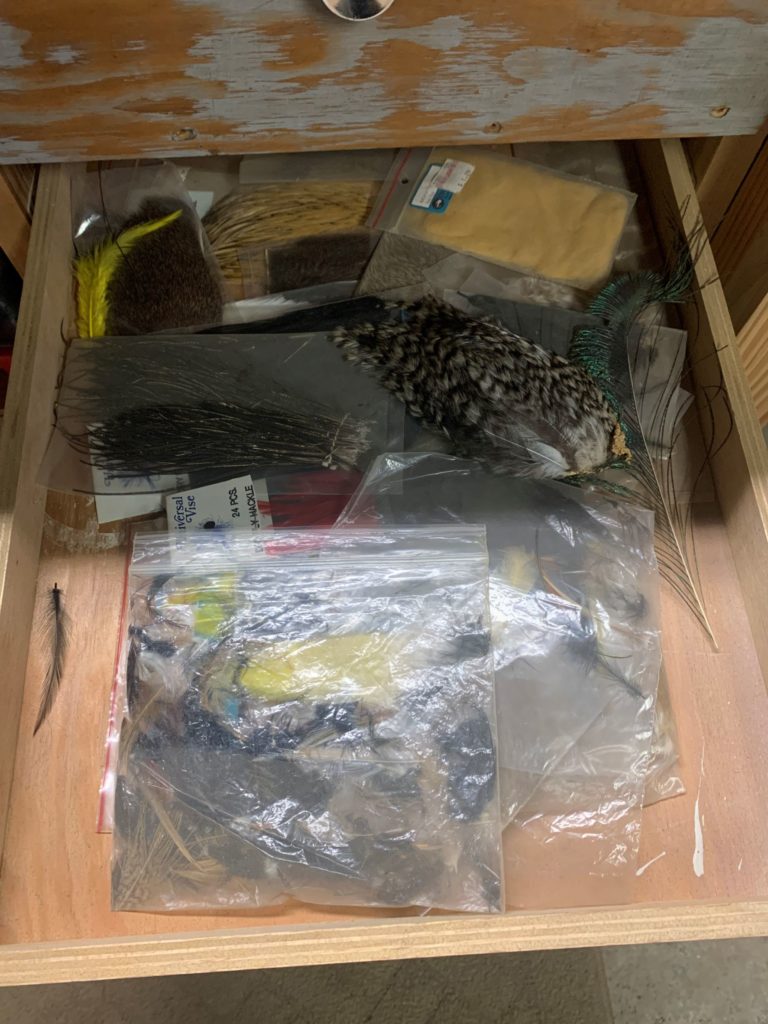I am not tying flies yet. Let’s see if I can shake the cobwebs off enough to get started. On my 18th birthday, I got a class where my dad and I went to a fly tying class for a term. That was a few weeks shy of thirty years ago, I think that was close to the last time I did this. The good news is that this is no longer a dark art. With YouTube and websites, the information should be readily available. I still have my old manuals too.


I suppose the good news is that this is not expensive to get into. Some of the introduction kits are around $50 and have everything that you need to start and move on from there. Even the supplies are pretty inexpensive. But a word of warning, as with all fishing tackle, some things are hot at particular location and/or time. It really is best to tie for the situation and not just amass a huge pie of potentially useless flies (unless you just like doing it).
What I am showing in the picture above is the result of two kits plus some additions. Without much ado, here are the required items.
- Vise
- thread
- fish hooks
- scissors or X-acto knife
- materials appropriate to the pattern.
These are the strongly helpful items
- bobbin
- hackle pliers
- head cement
That is it. It is really not that difficult to get started as long as your dexterity is reasonable, you have an adequate workspace with light and space. Some people use a repurposed desk, I am using a dedicated bench, I have tied plenty of flies at the kitchen table and even a card table in front of the TV.
There is more to know with materials, but I think that I will save that for another day. With that, you cannot really separate flies and fishing because that is the whole point. So, I am going to cover some terms that you will come across.
- Wet Fly – This a a whole class of flies that are meant to spend time under the water.
- Nymph – this is a type of wet fly that simulates a larva
- Emerger – This type of fly is when the larva is changing into an adult
- Streamer – This is a flashy wet fly used in steelhead fishing
- Dry Fly – This is a whole class of flies that are meant to float on the water. This would be the classic fly.
- Popper – these are flies that make noise. They are wet flies but make a sound when you are stripping them back in. Bass plugs do this as well.
The world of fly fishing can be confusing because they use some of the same equipment as conventional angling, but call them different names. For instance conventional fishing would call this item a ‘bobber’ while in fly fishing, it is called an ‘indicator’. I think that this is part of why fly fishing appears pretentious along with the catch and release ethic among other things.
A dry fly traditionally used natural materials like hair and feathers. It seems like the whole movement has loosened up quite a bit with flies called ‘dirty flies’. They might have suggestive names or they may be made of any kind of material. This is things like craft materials or rubber legs and things significantly departing from hair and feathers. I guess what I am trying to say is that what used to be very rigid rules about what to wear, what to use and how to do it seem like it is slowly changing.
I have always liked streamers. These flamboyant flies are imitating baitfish. This is where I am going to start because it uses a big hook. This will give me opportunity to practice technique at the same time I have some room to work.
End Your Programming Routine: Next stop, actually tying flies. Of course as I said at the beginning, these first couple are just to get my head right. I am not going to worry about them actually being fishable. That means the right fly for the fish and environment. I think for 2023, I am going to set a goal of catching a fish on a fly that I have tied. I should say try to catch a fish on a fly that I tied.
Recent Comments